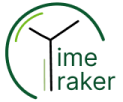How to Create a Project Timeline: The Ultimate Guide

Creating a project timeline is a crucial element of effective project management. Learning how to create a project timeline helps ensure that all project tasks are organized, deadlines are met, and resources are utilized efficiently. A well-structured project timeline serves as a roadmap, guiding your team through each phase of the project. With the right tools like a project tracker and employee time management software, you can streamline task prioritization and track progress seamlessly. This ultimate guide will walk you through the essential steps of crafting a project timeline, incorporating tips on using Time Traker to enhance your project management efforts.
Why a Project Timeline Matters
Before diving into how to create a project timeline, it’s essential to understand its significance. A project timeline provides a visual representation of the project’s schedule, helping to:
- Clarify Objectives: Define the project’s goals and milestones clearly.
- Enhance Communication: Ensure all team members understand their roles and deadlines.
- Manage Resources: Allocate resources effectively to prevent overutilization or underutilization.
- Track Progress: Monitor project progress against planned deadlines and make adjustments as needed.
A well-designed timeline also aids in task prioritization, ensuring that critical tasks are completed on time and that dependencies are managed effectively.
How to Create a Project Timeline: Step-by-Step
Learning how to create a project timeline involves several key steps. Follow this guide to build an effective timeline for your project:
1. Define Project Scope and Goals
Start by outlining the project’s scope and objectives. Understanding the project’s deliverables and goals helps in creating a realistic timeline. Break down the project into smaller, manageable tasks and define the key milestones you need to achieve. This step is crucial for setting a clear direction and ensuring that every aspect of the project is accounted for.
2. List All Tasks and Activities

To effectively create a project timeline, you need a comprehensive list of all tasks and activities involved in the project. Use a project tracker to record these tasks, noting their dependencies and estimated durations. This list will serve as the foundation for your timeline, helping you to visualize and organize the workflow.
3. Determine Task Dependencies
Identify dependencies between tasks to understand the sequence in which they should be completed. For example, if Task B cannot start until Task A is finished, this dependency needs to be mapped out in your timeline. Properly managing dependencies helps avoid bottlenecks and ensures a smooth project flow.
4. Estimate Task Durations
Estimate how long each task will take to complete. Be realistic and consider potential obstacles that might impact the timeline. Use historical data from similar projects or consult with team members who have experience with the tasks to make accurate estimates. This step helps in setting achievable deadlines and planning the overall project schedule.
5. Create the Timeline
With your list of tasks, dependencies, and estimated durations, you can now create the project timeline. Use a project management tool or a Gantt chart to visualize the timeline. Tools like Time Traker can assist in tracking progress and managing deadlines effectively. Ensure the timeline includes start and end dates for each task, as well as key milestones.
6. Assign Resources and Responsibilities
Assign team members to each task based on their skills and availability. Use employee time management software to allocate resources and monitor their progress. This helps in balancing workloads and ensuring that each task is handled by the appropriate personnel.
7. Monitor and Adjust the Timeline

Once your project timeline is in place, it’s important to monitor progress regularly. Track task completion using a project tracker and adjust the timeline as needed. Unexpected delays or changes in project scope may require updates to the timeline to keep the project on track. Time Traker can help you keep tabs on task progress and resource utilization, providing valuable insights for adjustments.
8. Communicate with Stakeholders
Regularly update stakeholders on the project’s progress and any changes to the timeline. Clear communication helps manage expectations and ensures that everyone is aligned with the project’s objectives and deadlines. Provide stakeholders with access to the project timeline to keep them informed and engaged.
Tools for Effective Project Timeline Management
Several tools can help you efficiently manage and create a project timeline. Here’s a look at some popular options:
1. Time Traker
Time Traker is an excellent tool for tracking time, managing tasks, and ensuring that your project timeline stays on schedule. It integrates seamlessly with other project management tools, providing real-time updates on task progress and resource allocation. Use Time Traker to monitor deadlines, track time spent on tasks, and adjust the timeline as needed.
2. Microsoft Project
Microsoft Project is a comprehensive project management tool that allows you to create detailed Gantt charts and track project timelines. It offers features for task scheduling, resource management, and progress tracking, making it a robust option for managing complex projects.
3. Asana
Asana is a user-friendly project management tool that helps teams plan, track, and manage their work. With features like task assignments, deadlines, and project timelines, Asana helps streamline project management and ensure timely completion of tasks.
4. Trello
Trello is a visual project management tool that uses boards, lists, and cards to organize tasks. It’s particularly useful for creating simple project timelines and tracking progress through a visual interface. Trello’s flexibility makes it suitable for various project management needs.
Best Practices for Project Timeline Management
To maximize the effectiveness of your project timeline, consider these best practices:
1. Be Flexible and Adaptable
Projects often encounter unforeseen changes or delays. Be prepared to adjust your timeline as needed and communicate any changes to your team and stakeholders. Flexibility helps in managing risks and ensuring that the project stays on track.
2. Regularly Review and Update

Regularly review the project timeline to ensure it reflects the current status of the project. Update the timeline to account for completed tasks, new deadlines, and any changes in project scope. This helps in maintaining accuracy and keeping the project on course.
3. Utilize Project Management Software
Leverage project management software and tools like Time Traker to streamline the creation and management of your project timeline. These tools provide features for tracking progress, managing resources, and adjusting schedules, enhancing overall project efficiency.
Conclusion
Understanding how to create a project timeline is essential for successful project management. By following the steps outlined in this guide, using tools like Time Traker, and adhering to best practices, you can create an effective timeline that ensures timely project completion. A well-structured project timeline helps in managing tasks, tracking progress, and achieving project goals efficiently. With the right approach and tools, you can navigate project complexities with confidence and drive your projects to success.
